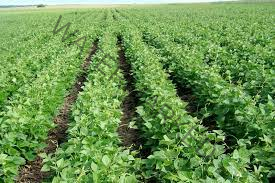Beans farming In Nigeria- Beans are a common legume available in markets across Nigeria because of their high demand and high consumption.
Health wise, it contains protein and is rich in carbohydrates as well. Also, it is a side dish that goes well with rice and stew, and it can be processed to prepare other meal varieties.
Beans are generally grown in the northern part of Nigeria. Still, with advanced development in agricultural practice, it can be planted in any part of the country.
So, suppose you are wondering how to start bean farming in Nigeria, in simple words. You need to get a land to farm, get land to farm, cultivate the land, select the beans seeds, make ridges, plant the seed, make irrigation and mulch the soil, apply fertilizer or manure, weeding, and finally harvest the beans produce.
If you follow the above steps carefully, you are sure on your way to establishing a successful beans farm in Nigeria.
How To Start Beans Farming In Nigeria

The beginning of every life endeavors is planning. Before you begin beans farming, you must make extensive findings and tabulate your resolute processes for proper implementation.
We have discussed extensively the steps you need to follow to start beans farming in Nigeria.
Step 1: Get a Land to Farm
Getting land to farm should be your priority. There are different means of getting farmland, and you can buy land if you have the money. Alternatively, you can rent or borrow from a friend or relative.
For affordability, I will advise that you look toward rural areas where the lease of farmland is cheap.
Read Also: How To Start Cucumber Farming In Nigeria [ Beginners Guide Pdf]
Note that you can farm beans in any part of Nigeria. Still, bean plants ultimately thrive in areas with moderate rainfall as it does not survive in areas with heavy or excess rain.
Step 2: Cultivate the Land
After getting the farmland, the next action point is to clear the land of every unwanted plant (i.e. weeds, dirt, debris, etc.).
If you have the strength and time, and also depending on the size of the farmland, you can cultivate the land yourself.
Also, you can hire labourers to do the job or source cheap labour by asking for help from friends and family members that are willing to lend a hand.
The process here includes:
Clearing the land using cutlass or any other heavy machines.
Rake to collect the dirt so that the land can be neat
Burn all the dirt or find alternative means of disposal
Step 3: Select the Beans Seeds
This step is equally important as the first, if not the ultimate step. No matter the effort you put into beans farming, if you don’t select quality seedlings to plant, all effort will prove abortive.
Don’t make a mistake most novice farmers make by buying beans from any marketplace. Instead, it would be best to visit an accredited agro-store to buy quality beans seeds.
The best bean seeds to buy for planting are “Hybrid seeds”. They are the best because they produce higher than any other bean seeds (i.e. open-pollinated seeds). Also, they resist diseases and pests.
You can consult an expert to help you out so that you won’t make mistakes in the process of selection.
Read Also: How To Grow Onions Anywhere In Nigeria [Beginners Guide]
Step 4: Make Ridges

Once you have successfully cultivated the farmland and have purchased the beans seedlings you want, the next thing to do is to make a ridge or bed on the soil where the planting will be done.
Making ridges or beds for planting on the farmland increases the yield.
Step 5: Plant the Seed
The planting of beans seeds can be done in different ways. You can plant directly on the farmland or transplant the sprouted beans from your nursery.
Planting Directly on the Farmland
After you have cultivated the farmland, you should make ridges where the seeds will be planted.
You can plant the seeds directly into the ridges 2 inches deep into the soil and then cover it with the surface soil.
The number of seeds in each hole should not be three, at most four. Also, you should give a four to five inches gap apart when planting.
Transplanting
If you don’t want to plant directly on-farm beds, you can do transplanting. The process is:
Obtain sacks or plastic containers.
Fill the containers with compost made from manure (animal dropping) and bare earth.
Plant the hybrid seeds inside the compost and cover them with soil.
Water the plant daily in the morning and evening. Continue this process for ten days because the germination period takes about eight to ten days.
However, the germination period can extend by two weeks or more in cooler temperatures.
Read Also: How To Start Sugarcane Farming In Nigeria [Step By Step Guide]
Once germination takes place and you have prepared the farm bed or ridges, begin to remove the plants and transplant them on the farm bed or ridges.
We advise that you practice staggered planting. This means planting the seeds on different dates throughout the season so that you can enjoy a more extended yielding period.
Step 5: Make Irrigation and Mulch the Soil
This process is optional, but we included it should in case you didn’t begin planting during raining season.
During making farm beds, ensure there is space between each bed, at least 3 to 4 inches, where water can pass by.
Note that bean seedlings don’t need too much water. The reason is that the plant’s root is shallow and will rot and eventually die without yielding.
Also, you can practice mulching by covering the plants to conserve moisture. Make use of leaves to protect the plant so that excess sun heating the plants will be reduced.
Read Also: How To Start Vegetables Farming Business In Nigeria (Step by Step Guide)
Step 6: Apply Fertilizer or Manure
This step is optional. It is only necessary to apply manure or fertilizer on your plant if the soil is depleted or lacks nutrients, helping to boost soil nutrients.
Beans produce nitrogen like other legumes, which helps them to germinate. However, when you observe the leaves of young plants becoming pale, there is a nitrogen depletion. It is under this condition that you can apply manure or fertilizer.
Importantly, fertilizer application should be made cautiously and if need be, employ an expert to help you out.
Treated chicken dung is an example of manure that is most effective. Also, fertilizers that are rich in nitrogen should be applied.
Step 7: Weeding
During the germination stage, unwanted plants grow alongside the beans plant. Weeding should be done to remove those plants.
It would be best if you were not hasty during weeding but gentle and cautious so that you wouldn’t unroot the beans plant along with the weeds.
Step 8: Finally, Harvest the Beans Produce
Beans plants produce in about 55 to 65 days. The time can be longer depending on soil nutrients and weather conditions.
The ideal period to harvest the produce is when the pods are dry and change in colour to light brown. It would help if you gently pulled the beans by hand from the stalk. Be gentle not to tear the blooms so that you can continue to harvest multiple times as long as the plant continue to produce.
Common Pests and Diseases
One of the problems you will likely face during beans farming is pests and diseases. That is why during the seed selection stage, ensure you purchase quality hybrid seeds that have been treated and can resist diseases and pests that plague beans plants.
So, pests that are likely to affect your beans plants are:
– Rhinoceros Beetle
– Whiteflies
– Bollworm
– Grain borer
– Mites
– Aphids
– Root Not Nematodes
While the diseases that may arise because of the manifestation of this pest infestation or any other ill cause are:
Leaf spot
Blight
Brown rust
Viral diseases
Mildew and mould
Also, bear in mind that too much water on the farm bed will cause the plant root to rot. It is important not to allow too much water on the farm.
It is imperative that you consistently monitor your beans plant to spot any disease or pest infestation right from the flowering stage.
Swiftly apply measures of fumigating with pesticides or herbicides (i.e. imiforce, scorpion force, bendioxide, cyclocydim, etc.) once a week from the flowering stage up until when it begins to pod.
Major Problems Facing Beans Farming in Nigeria
Although we have iterated severally within this informative piece the lucrativeness of beans farming in Nigeria, we will also like to identify some of the common major problems facing beans farming in the country. They are:
- Unavailability of quality beans seeds
- Post-harvest storage loss of beans is another major challenge
- Low fertility problems
- There is a likelihood of root and stem diseases occur
- Prone to leaf disease
Bearing the above problems in mind, it is important to ensure pest and disease control, practice effective weed control, and most importantly, plant resistant cultivars or disease-free seeds should be purchased.
How Many Bags of Beans Can One Hectare Produce?
Beans farming is a profitable venture. Under proper management and good weather condition, the number of bags of beans you should realize is around 28 – 30 bags.
When is the Best Time to Plant Beans in Nigeria?
Deciding the best time to plant beans in Nigeria can be tricky. However, the vital factor is the weather during and after planting.
Because beans plants don’t thrive during heavy rainfall, the best time to plant beans in Nigeria is towards the end of the rainy season, typically from August, when the rain is declining.
How Profitable Are Beans Farming in Nigeria?
Beans farming in Nigeria is very profitable. The cost of production is not extremely expensive.
With little or no expenses, you can begin beans farming. For example, planting beans on one hectare of land will cost less than 100,000 Naira.
Also, considering the high demand for beans in Nigeria and Africa at large, these are reasons why you should venture into beans farming.
How to Plant Beans in a Container
It is possible to plant beans in containers. To consider are soil type, drainage, pot depth, and weather conditions. The process of growing beans in a container is as follows:
Obtain your choice container
Fill the container with the proper soil
Plant the seeds one inch deep
Apply manure and fertilizer if needed
Mulch the surface lightly to conserve moisture
Water the plant daily
Note that the number of bean seeds you can plant in a container depends on the pot’s diameter.
Types of Beans Grown in Nigeria
Farmers in Nigeria plant varieties of beans. The common types of beans grown in Nigeria are:
Iron Beans are available in white and brown colours.
Kidney Beans
Chickpeas
Black beans
What is the Correct Spacing for Beans?
To germinate correctly, you must plant the seeds following the correct spacing method for your bean seedlings.
The correct spacing for beans is four to six inches apart, with 18 inches left between each row. The best tool for the procedure is using a hoe to scratch out rows, or you can use a trowel to dig individual planting holes.
Conclusion
Beans farming in Nigeria is lucrative, and the financial implication is not overwhelming. So, considering the minimal financial and material resources required for this venture, profitability is another motivation to consider and begin this business. We have extensively outlined the step by step guide from beginning to the end to help you throughout the process.




4 Replies to “[Best Guide] How To Start Beans Farming In Nigeria”